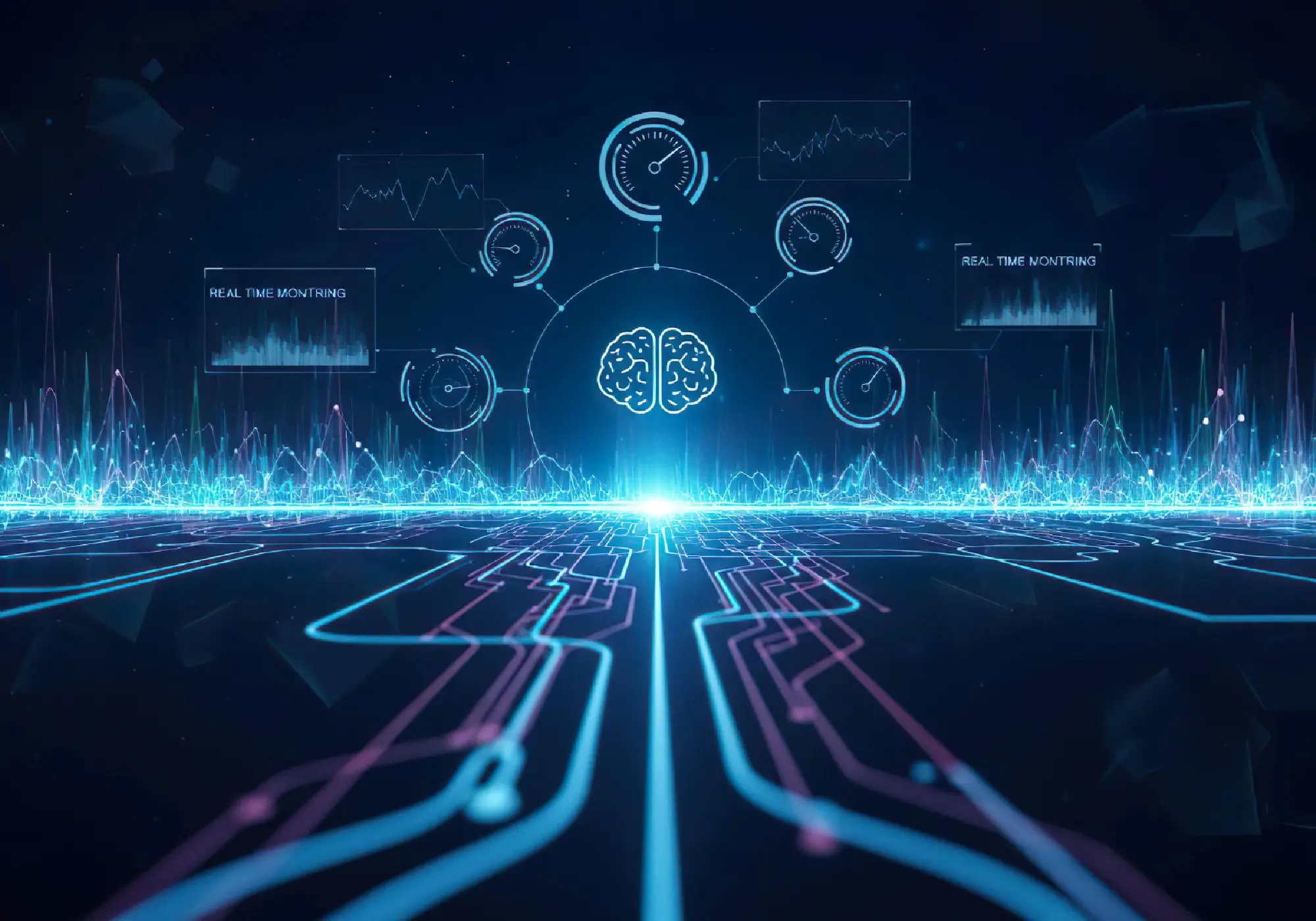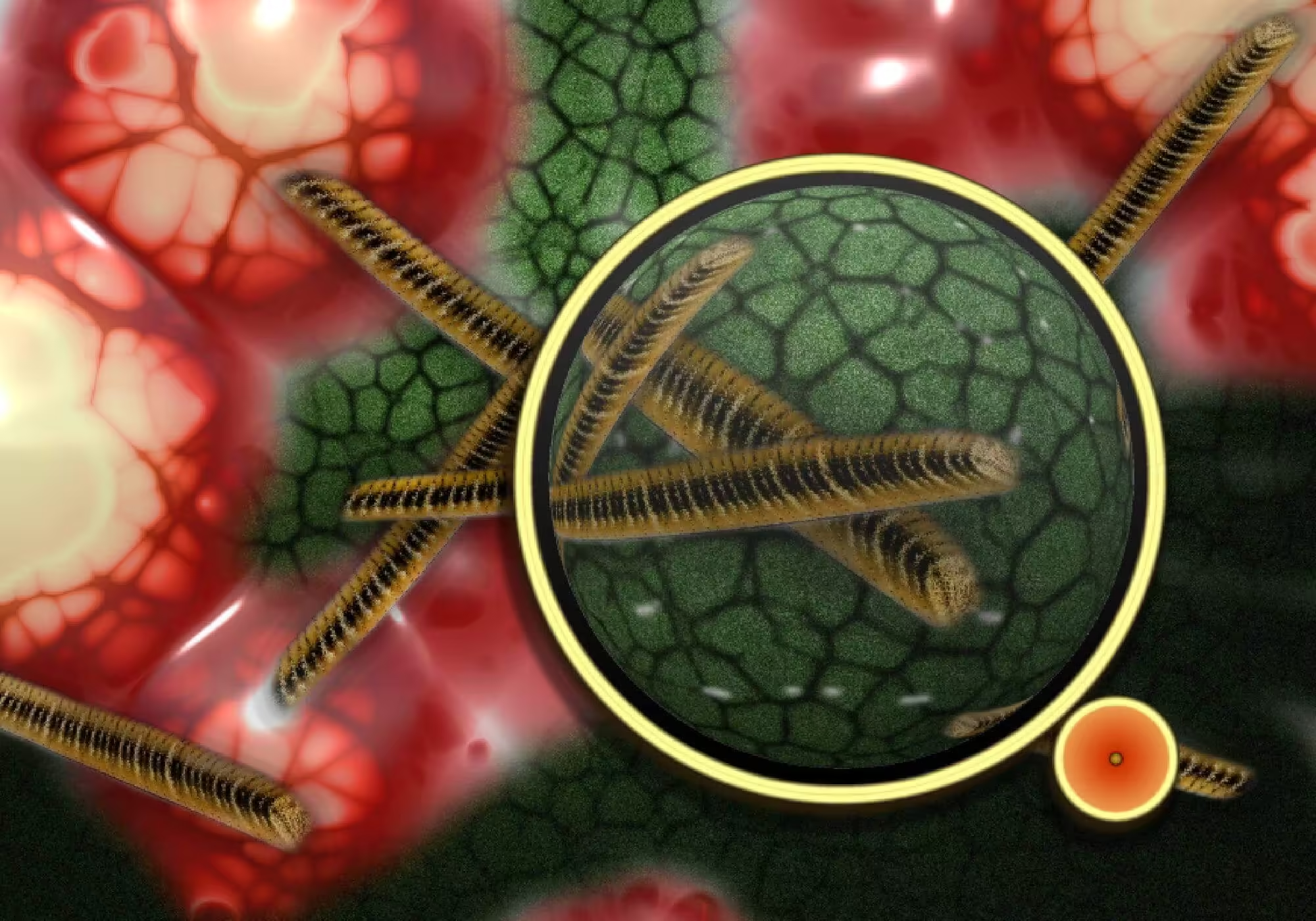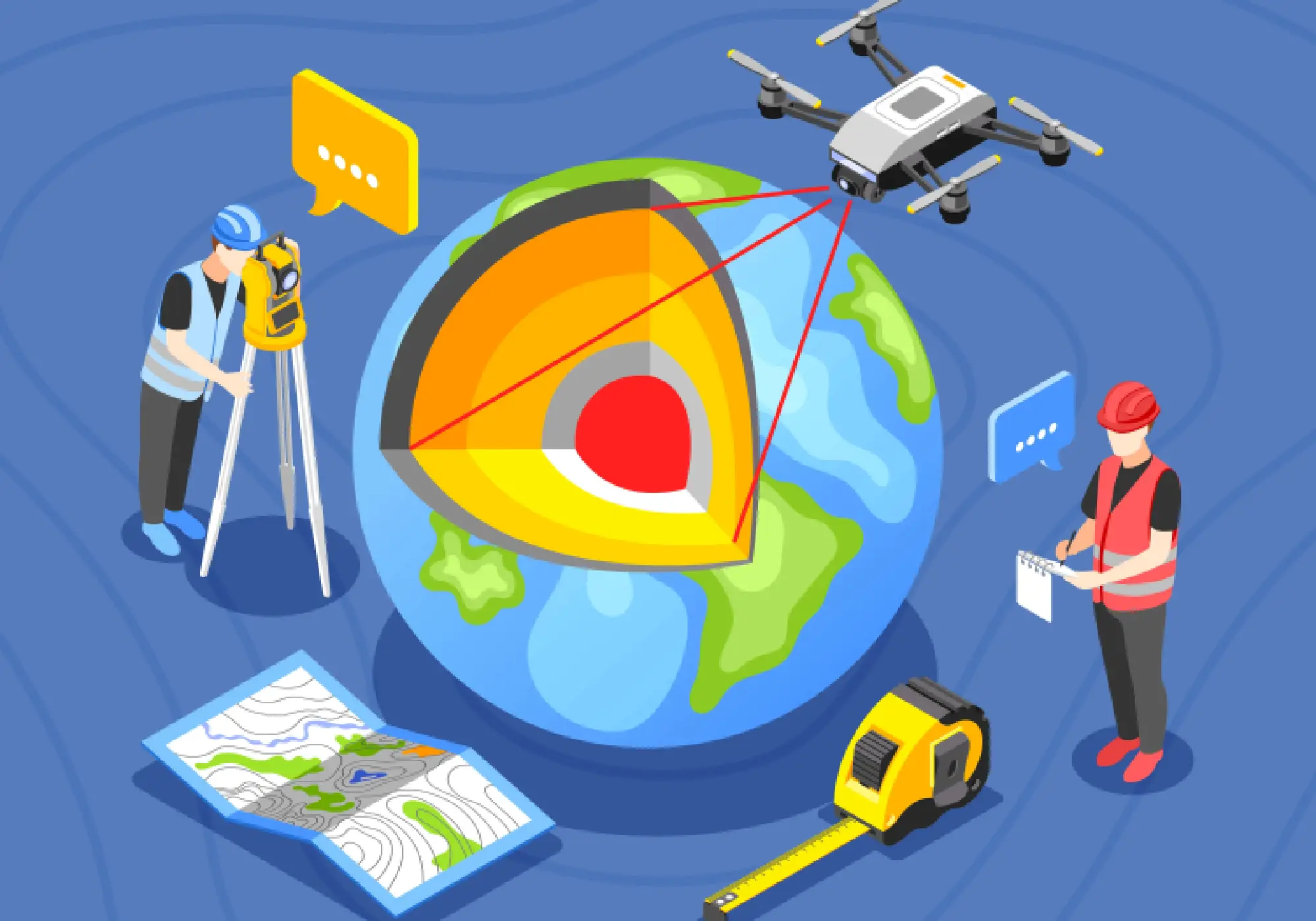Welcome to the world of quantum sensing, a field where modern physics turns into technology so sensitive that it makes ordinary sensors seem outdated. Think about it, your smartphone scans your fingerprint, your car spots obstacles, and your smartwatch tracks your heartbeat. Now imagine sensors that go even further. These sensors can detect the faint magnetic signal from a single living cell. They can also measure gravity so precisely that they uncover hidden tunnels beneath the ground. From MRI machines that look inside our bodies to GPS satellites that guide our journeys, sensing technology already shapes our daily lives. But quantum sensors take this to a whole new level. They can map the magnetic field around a single protein molecule. They can detect tiny gravitational changes to uncover hidden minerals deep underground. Furthermore, they can even track submarines without using any external signals. Quantum sensing combines the fascinating world of quantum mechanics with real-life impact. It transforms complex physics from chalkboard equations into powerful tools. These tools solve real problems, such as understanding how our brains function or finding clean water in drought-hit regions. We’re now teaching atoms and light to become the most sensitive measuring tools ever created. Ready to see how this revolution is unfolding? Let’s dive in. What Is Quantum Sensing Technology? Quantum sensing is about using the strange quantum behavior of atoms and particles to measure things with incredible accuracy. Unlike classical sensors, like thermometers, that detect bulk properties, quantum sensors rely on single atoms, photons, or even tiny crystal defects as their main sensing tools. These ultra-small elements are extremely sensitive to their surroundings. Think of it this way: a regular sensor might completely miss the tiniest vibration, like a flea landing on a huge table. A quantum sensor is like balancing an atom on your fingertip. It is so delicate that even the faintest change can disturb it. This includes whether it’s a weak magnetic field, a soft gravitational tug, or a slight temperature shift. By observing how the atom’s spin or energy levels change, scientists can detect changes. They can measure things with a precision that classical sensors could never achieve. Quantum Effects: The Science That Turns Imagination into Reality What gives quantum sensors their mind-blowing sensitivity? It all comes down to three strange but powerful quantum effects, superposition, entanglement, and squeezing. Don’t stress, we’re about to break them down in the simplest way possible. 1. Superposition Imagine flipping a coin, but instead of landing on heads or tails, it keeps spinning in the air. It’s both and neither at the same time until you finally look at it. That’s what we call superposition. In quantum sensing, atoms or photons can exist in several states at once. This makes them extremely sensitive because every outside force, like magnetism, gravity, or even time, affects all those states together. When we measure the quantum particle, it reveals how the environment disturbed that fragile balance. Think of it this way: a normal sensor works like a single guard watching for intruders. But in superposition, it’s as if a thousand guards are watching from different angles at the same time. You end up catching far more detail. 2. Entanglement Entanglement happens when two particles become deeply linked, so much that measuring one instantly reveals information about the other, even if they’re far apart. Einstein famously described this strange connection as “spooky action at a distance.” In quantum sensing, entanglement completely changes the game. When we entangle two particles, one can act as a reference while the other performs the sensing. Any tiny change that affects the sensing particle instantly shows up as a difference compared to its entangled partner. This connection helps cut down noise and uncertainty, making measurements far more precise. Think of it like two friends who are perfectly in sync. One friend walks through a magnetic field while the other stays still. When they later “compare notes” through their quantum link, they can tell exactly what happened, without ever needing to talk. 3. Squeezing Here’s where it gets really smart. Quantum mechanics tells us that you can never know everything about a particle perfectly, there’s always some uncertainty. But squeezed light finds a clever way around this by redistributing that uncertainty. Think of it like this: you’re trying to measure an object’s exact position. Quantum noise keeps making your reading blurry. By “squeezing” the light, you reduce the uncertainty in the position to almost nothing. This allows the uncertainty in another property, like momentum, to grow instead. You’re not removing uncertainty altogether; you’re just shifting it to a place where it doesn’t interfere with your measurement. In gravitational wave detectors like LIGO, scientists use squeezed light to measure incredibly tiny distance changes. This trick lets them detect ripples in spacetime, distortions smaller than the width of a proton over a 4-kilometer stretch. Platforms Powering Quantum Sensing Quantum sensing uses several main physical platforms, each designed for specific types of measurements and environments. The table below highlights five major platforms that are actively shaping the future of quantum technology. Platform What It Measures How It Works Pros Limitations Real-World Use NV Centers (in diamonds) Magnetic field sensing, Temperature Electron spin states of nitrogen vacancies in a diamond lattice Room-temp use, high spatial resolution, robust Can be expensive to fabricate, lower coherence time than atoms Biological imaging, drug delivery monitoring Atomic Magnetometers Magnetic fields, brain signals (MEG) Optically pumped magnetometer uses lasers to align electron spin states in an atomic gas (e.g., Rubidium) Portable, accurate, low power Needs careful magnetic shielding, slightly larger size Wearable MEG, geophysical surveys SQUIDs (Superconducting Quantum Interference Devices) Magnetic flux Uses superconducting loops and Josephson junctions to measure magnetic fields Extremely sensitive, best field sensitivity available Cryogenic cooling required, complex setup MRI systems, deep-sea research, fundamental physics Trapped Ions Electric fields, time Laser cooling and trapping of single ions; uses quantum interference (Ramsey spectroscopy) Highest known precision physics and stability for timekeeping Complex setup, delicate operation, vacuum required Atomic clocks,
MLOps and Model Monitoring: A Science-First Guide to Deploying and Maintaining AI Models
Creating a strong model is only the beginning. MLOps and AI Model Monitoring make sure your AI actually performs well in the real world. With the right practices, you can deploy your model smoothly, track its performance, catch data drift early, and set up automated retraining loops. This keeps your models accurate, reliable, and valuable even as the world and data change.
How Microbial Ecology Shapes Our World and Health
Microbes may be tiny, but they powerfully shape every part of our world. Life depends on them more than we even realize. The soil we walk on, the food we eat, and even our own bodies are influenced by these invisible organisms. A huge part of human health and immunity is controlled by microbes. They quietly support the environment and many systems that keep our world functioning. Microbial ecology plays a vital role in keeping life active and balanced. Even though we can’t see them, microbes are constantly working behind the scenes, protecting our health, supporting ecosystems, and keeping natural processes running smoothly. In this guide, you’ll see how closely microbial ecology and human health are linked. You’ll understand how the microbiome shapes both wellness and disease. You’ll also explore how environmental microbes influence our planet and discover real-life examples of how helpful microbes are already making a difference. This isn’t just theory, these insights give you practical ways to improve your health and protect the environment we all share. What is microbial ecology? Microbial ecology explores how microorganisms, like bacteria, archaea, fungi, protists, and viruses, interact with their surroundings. This field looks at how these tiny organisms live in their natural habitats, how widely they are spread, how many of them exist, and what important roles they play in keeping global ecosystems balanced and functioning. Scales of Microbial Life Microbes work across incredible scales and often set the rules for how bigger life forms survive and function. Key Ecological Principles in Microbial Systems Microbial communities follow ecological patterns just like forests or coral reefs do. By understanding these rules, we can better predict how microbes react when their environment changes or gets disturbed. 1. Community Assembly & Resource Competition When microbes enter a new place, they immediately start competing for the limited resources available. The ones that arrive first usually get an early advantage. They settle in and start growing before others even show up. This early occupation, known as the priority effect, plays a big role in deciding which species take control of that environment. Most of microbial ecology revolves around this struggle for nutrients. Each microbe follows its own strategy. Some bacteria grow very fast when plenty of food is available, while others grow slowly but can survive longer when food becomes scarce. Because of these different survival methods, the whole microbial community ends up using resources more efficiently. Scientists refer to this process as niche partitioning. In simple terms, every species picks its own role. Each one uses different nutrients or lives in slightly different spots within the same habitat. For example, in your gut, some bacteria feed on sugars while others break down hard plant fibers. This teamwork-like division stops one species from taking all the resources for itself. 2. Cross-Feeding and Metabolic Exchange Microbes don’t just fight for survival, they also work together. One common form of cooperation is cross-feeding, where one microbe uses the waste released by another. This exchange of materials creates a chain of dependence that helps the entire community stay stable. You can see a simple example inside your mouth. Certain bacteria break down complex sugars into simpler substances. Then, other bacteria feed on those substances and produce acids in the process. These acids can harm tooth enamel, which is why dentists study these interactions to design better ways to prevent cavities. These networks of metabolism are far more complex than they seem. Just a teaspoon of soil can hold hundreds of microbial species, all trading thousands of different molecules at once. Due to advanced DNA sequencing and powerful computer models, scientists can now trace these hidden chemical routes and understand how these tiny communities function. 3. Stability, Resilience & Tipping Points Strong microbial communities can handle change and quickly recover from disruptions. Scientists call this ability resilience. For example, a resilient gut microbiome bounces back fast after someone takes antibiotics. But if the microbiome is weak, it may shift to an unhealthy state and stay that way. A tipping point happens when a microbial community crosses a limit and can no longer return to its original healthy balance. It’s similar to how a grassland can turn into a desert after too much grazing, once the damage is done, it doesn’t easily go back. Microbial communities can face the same kind of shift, and this can seriously affect human health or how ecosystems work. Researchers are now learning to spot early warning signs before these tipping points happen. A drop in diversity or sudden changes in how the community behaves can show that the microbiome is losing resilience. By understanding these signals, doctors could step in early and stop small imbalances from turning into long-term diseases. Microbial Ecology in the Natural World Microbes dominate every ecosystem on Earth. Their ecological roles extend far beyond what their small size might suggest. Soil and Plant-Microbe Interactions Healthy soil holds more living organisms than any other ecosystem on Earth. Just one gram of rich soil can contain over a billion bacteria and long threads of fungi. These tiny life forms constantly break down organic matter, recycle nutrients, and make the soil fertile, so plants can grow stronger. Plant roots build active partnerships with helpful microbes in a thin soil layer called the rhizosphere, the zone directly influenced by root activity. Mycorrhizal fungi stretch beyond the roots, collecting water and minerals and giving them back to the plant in exchange for sugars. In the same way, nitrogen-fixing bacteria living inside root nodules turn atmospheric nitrogen into a natural form of fertilizer that plants can actually use. These natural partnerships have huge benefits in real farming. When farmers protect and support soil microbes, they can use fewer chemical fertilizers and pesticides. Books like Teaming with Microbes by Jeff Lowenfels encourage gardeners to work with soil life instead of fighting against it. This method, known as regenerative agriculture, boosts crop production while healing the land at the same time. However, when intensive plowing, excessive fertilizers,
GIS and Remote Sensing in Geology: Free Tools with Hands-on Projects
Geology is quietly stepping into a digital age, and GIS and Remote Sensing are driving this change. Geologists no longer rely only on a hammer, a compass, and a field notebook. Now, they can study the entire continents from their screens, monitor even the smallest ground changes, and locate mineral-rich areas without being physically present at the site. This powerful technology is reshaping how the modern geology works and continues to open new possibilities every day. Imagine spotting a landslide risk before it ever hits, or identifying a hidden gold deposit buried deep beneath the Earth. That might seem like something out of a sci-fi movie, but it’s already possible today due to modern geospatial analysis tools. These technologies act like our digital eyes from space, helping us to observe and understand the Earth in a way that were once unimaginable. Now, we can actively monitor how tectonic plates slowly shift or how rivers reshape the land, whether at a global scale, across a region, or even within a single valley. This guide breaks down this advanced technology in a simple and friendly way. We begin with clear definitions, show you where to get the best free data, and then move straight into two real hands-on projects using QGIS and Google Earth Engine (GEE). By the end, you’ll feel confident and ready to use these powerful tools in your own geology work. What are GIS and Remote Sensing? Let’s clear up the confusion right away. Remote sensing: Remote sensing works like capturing Earth’s surface from satellites or airplanes, but it goes far beyond normal photography. Instead of just taking pictures, satellites record this data in different wavelengths such as visible light, infrared, thermal, and radar. Each of these wavelengths uncovers the unique details about rocks, minerals, vegetation, and water. It feels almost like using “X-ray vision” for geology. While human eyes can only see three colors, red, green, and blue, satellites can detect dozens of spectral bands. Some bands pick up moisture, others highlight iron-rich areas, and radar bands can even see through clouds and darkness to identify what lies beneath. GIS (Geographic Information System): GIS works like our digital mapping lab. It is a tool that lets you layer, study, and visualize spatial data in one place. You can place satellite images, elevation models, fault maps, and mineral survey layers on top of each other and interact with them. Once everything is stacked, you start running calculations, noticing patterns, and making clear, visually rich maps that reveal geological insights. Here’s the perfect combo: Remote sensing gathers the raw data. GIS helps you understand it. Consider it this way, imagine you’re a doctor. Remote sensing acts like an MRI machine, capturing detailed images of what’s beneath the surface. GIS becomes your diagnostic software, letting you examine those images, compare them with previous scans, and detect what’s really happening. For geologists, this means: The best part is that you can do all of this with free tools and open data. Types of Remote Sensing Technology Used in Geology Different geological questions require different “eyes”. Here are the primary types of remote sensing technology used in the geosciences. Type of Sensor What it “Sees” Common Geology Usage Real-World Example Optical (Multispectral) Reflected sunlight across several discrete spectral bands (Visible, Near-Infrared, Shortwave-Infrared). Mineral detection, vegetation health (NDVI), identifying different rock types, and regional-scale geoscience mapping. Using Landsat data or Sentinel-2 geology data to map major lithologies in a desert region. Hyperspectral Hundreds of very narrow, continuous spectral bands. Precise identification of specific minerals (e.g., clays, sulphides), detailed alteration mapping. Identifying specific kaolinite and illite minerals in an area of hydrothermal alteration. SAR (Synthetic Aperture Radar) Microwave energy; measures distance, roughness, and moisture content. Ground deformation (earthquakes, volcanoes), measuring slight changes in elevation, creating DEMs. Measuring post-seismic displacement after a major earthquake using InSAR (Interferometric SAR data). LiDAR & DEMs Laser pulses; measures the exact time it takes for light to return to the sensor. High-resolution elevation models, landslide inventories, detailed fault mapping, precise digital elevation model generation. Creating a highly detailed bare-earth DEM to identify subtle ancient fault scarps hidden under forest cover. Understanding these differences helps you choose the right data for your project. Need to map minerals in sunny deserts? Use optical. Studying volcanic deformation in cloudy regions? SAR is your friend. Where to Get Free Geological Data Follow this guide to access free, high-quality geospatial data. Make sure to bookmark this section. 1. USGS EarthExplorer URL: USGS EarthExplorer What you’ll find: Best for: Long-term change detection, elevation modeling, North American geology Pro tip: Create a free account to download unlimited data. Use the search filters to narrow by cloud cover percentage. 2. Copernicus Open Access Hub URL: https://scihub.copernicus.eu What you’ll find: Best for: Current mineral exploration, European geology, disaster monitoring Resolution: 10 meters for Sentinel-2 (better than Landsat!) Pro tip: Sentinel-2 has a 5-day revisit time. You can track changes almost weekly. 3. OpenTopography URL: https://opentopography.org What you’ll find: Best for: Detailed terrain analysis, landslide studies, geomorphology research Pro tip: Their web-based tools let you crop and process DEMs before downloading. Saves you time and storage space. 4. NASA Earthdata URL: https://earthdata.nasa.gov What you’ll find: Best for: Large-scale regional studies, climate-geology interactions, thermal mapping Pro tip: Use NASA’s Worldview tool for quick visual exploration before downloading full datasets. Quick Data Cheat-Sheet Data Source Best Dataset Resolution Ideal Geological Use USGS EarthExplorer Landsat 8/9, SRTM DEM 30m, 30m Mineral mapping, elevation Copernicus Hub Sentinel-2 10m Current rock/mineral mapping OpenTopography LiDAR, high-res DEM 1–5m Landslide, fault analysis NASA Earthdata ASTER, MODIS 15–250m Regional thermal studies Storage tip: Satellite images are huge (500MB–5GB per scene). Start with small areas of interest. Process first, then expand. Hands-on Project 1: Detecting Mineral Zones with Sentinel-2 in QGIS Remote sensing becomes seriously powerful when we use spectral bands to reveal materials that the human eye would normally miss. In this project, we apply the Iron Oxide Band Ratio to spot signs of surface mineralization. It’s




